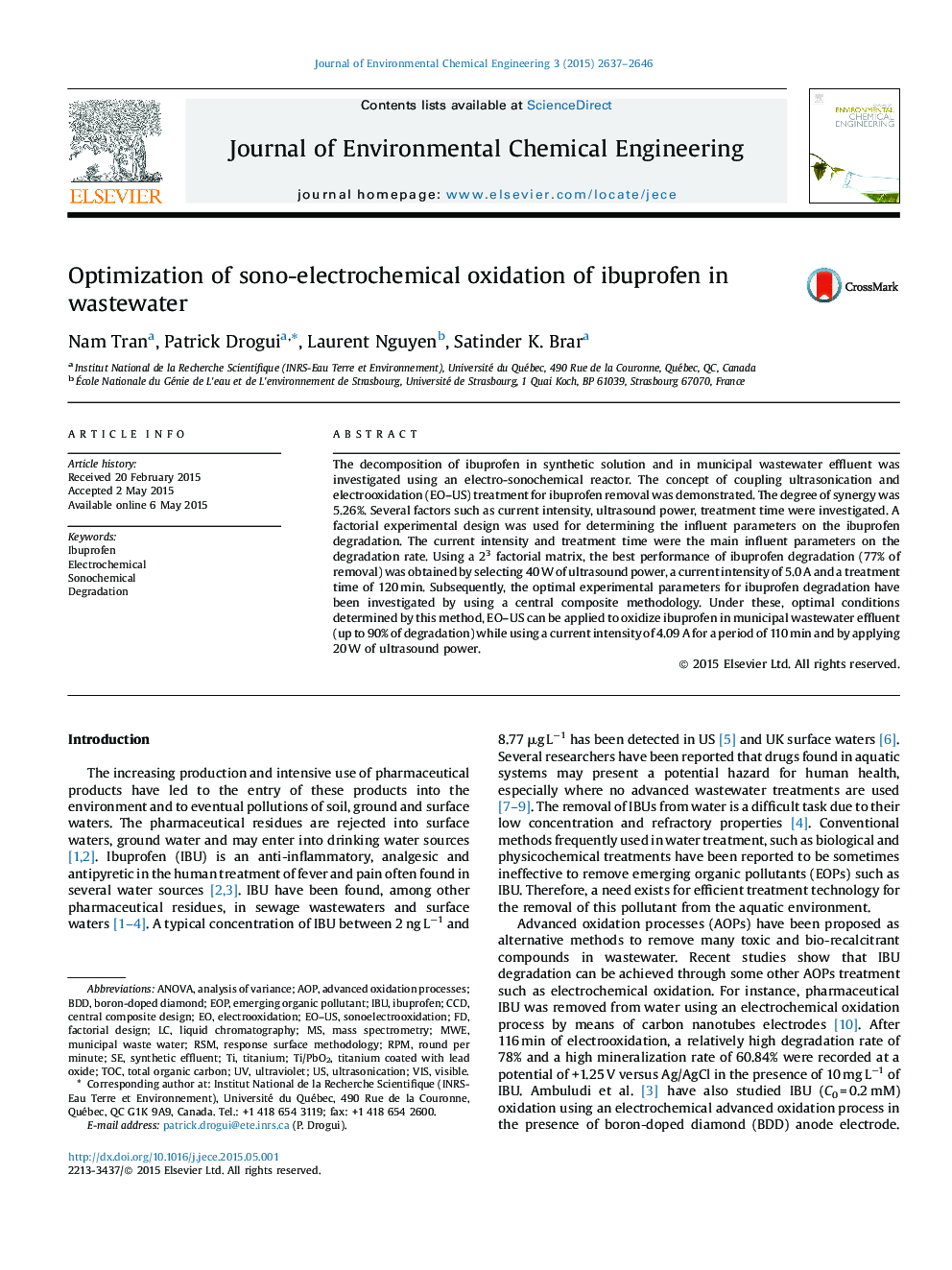| کد مقاله | کد نشریه | سال انتشار | مقاله انگلیسی | نسخه تمام متن |
|---|---|---|---|---|
| 222070 | 464269 | 2015 | 10 صفحه PDF | دانلود رایگان |
• Electrochemical oxidation was combined with ultrasonication for treatment of MWE contaminated by IBU.
• IBU (C0 = 10 mg L−1) could be optimally oxidized up to 87.5%.
• Current intensity and time were the main parameters influencing IBU oxidation
• Current intensity and time contributions on IBU removal are 51.5% and 44.7%.
• 84 percent of TOC was removed. IBU was mainly transformed into H2O and CO2.
The decomposition of ibuprofen in synthetic solution and in municipal wastewater effluent was investigated using an electro-sonochemical reactor. The concept of coupling ultrasonication and electrooxidation (EO–US) treatment for ibuprofen removal was demonstrated. The degree of synergy was 5.26%. Several factors such as current intensity, ultrasound power, treatment time were investigated. A factorial experimental design was used for determining the influent parameters on the ibuprofen degradation. The current intensity and treatment time were the main influent parameters on the degradation rate. Using a 23 factorial matrix, the best performance of ibuprofen degradation (77% of removal) was obtained by selecting 40 W of ultrasound power, a current intensity of 5.0 A and a treatment time of 120 min. Subsequently, the optimal experimental parameters for ibuprofen degradation have been investigated by using a central composite methodology. Under these, optimal conditions determined by this method, EO–US can be applied to oxidize ibuprofen in municipal wastewater effluent (up to 90% of degradation) while using a current intensity of 4.09 A for a period of 110 min and by applying 20 W of ultrasound power.
Journal: Journal of Environmental Chemical Engineering - Volume 3, Issue 4, Part A, December 2015, Pages 2637–2646
